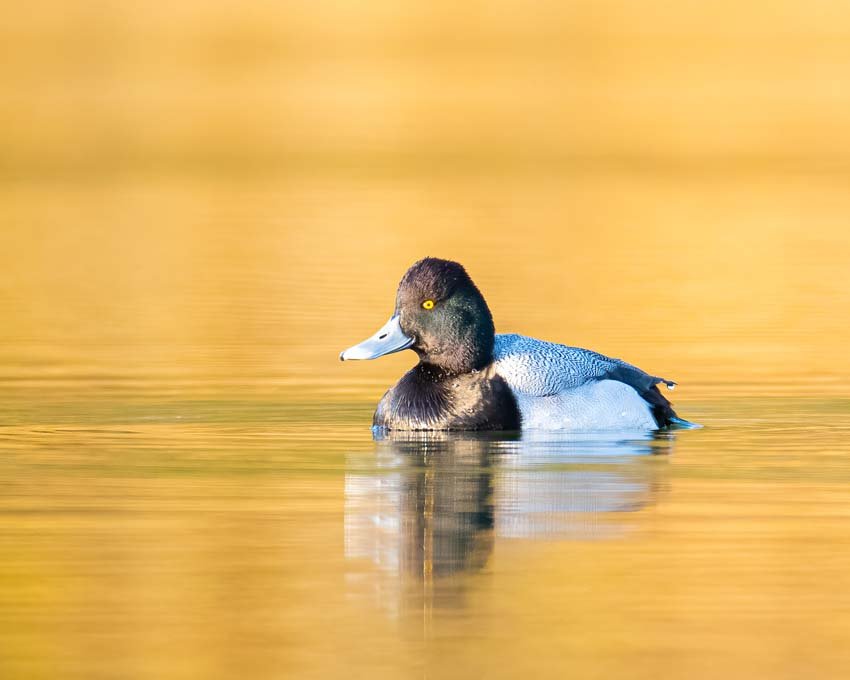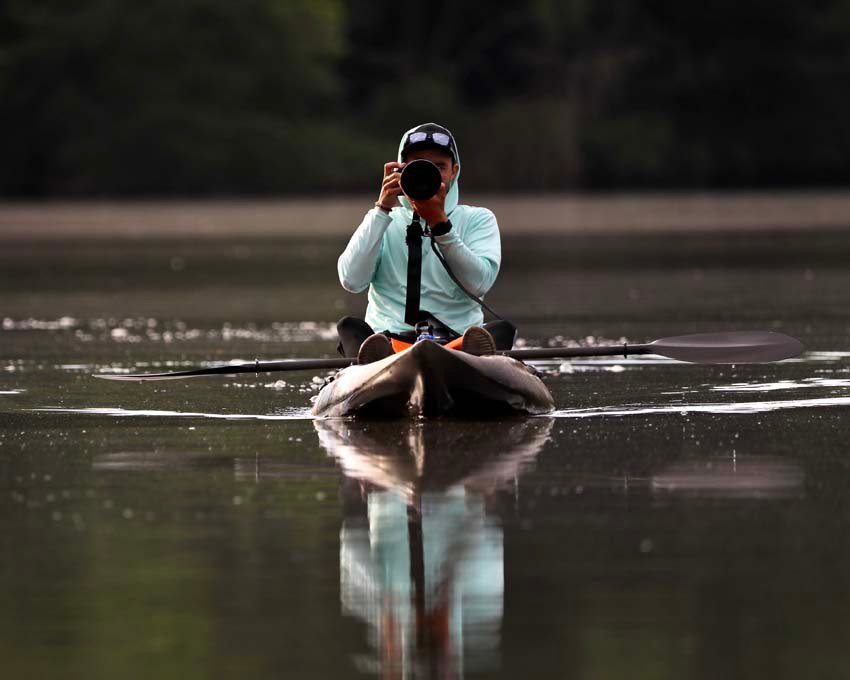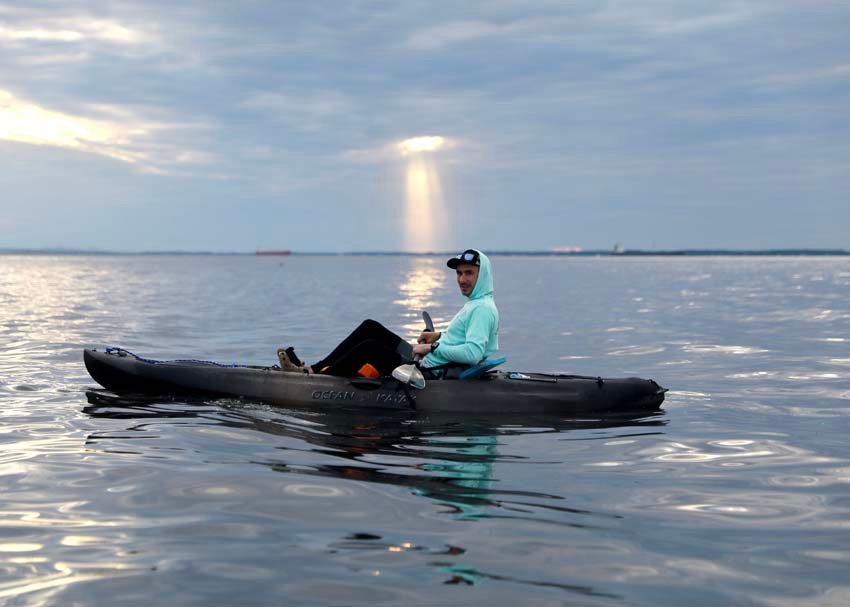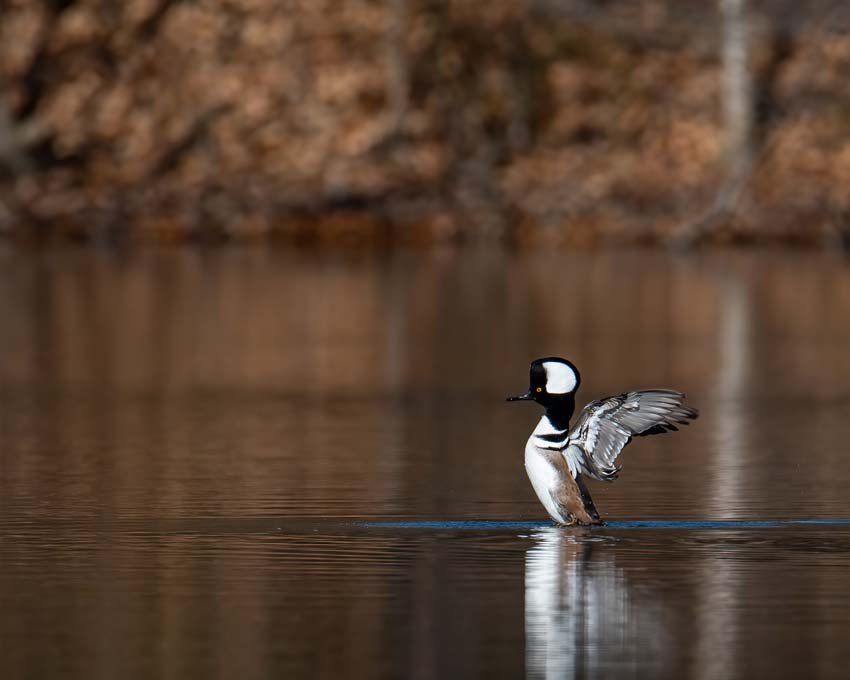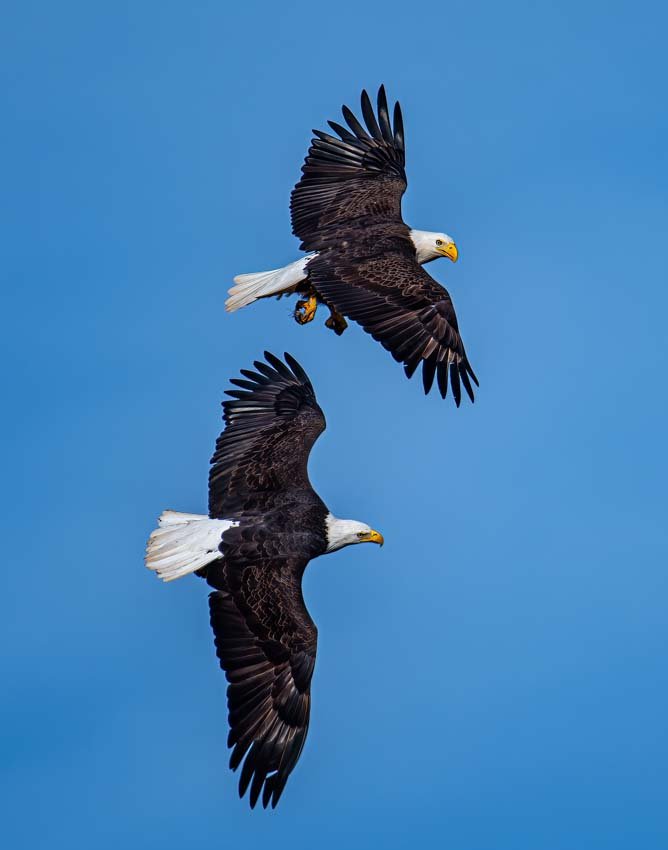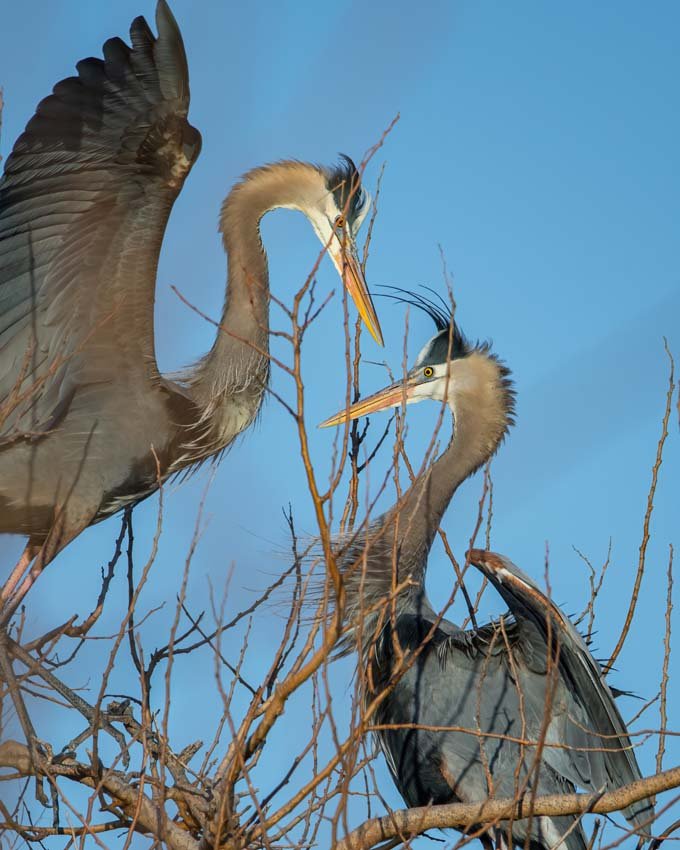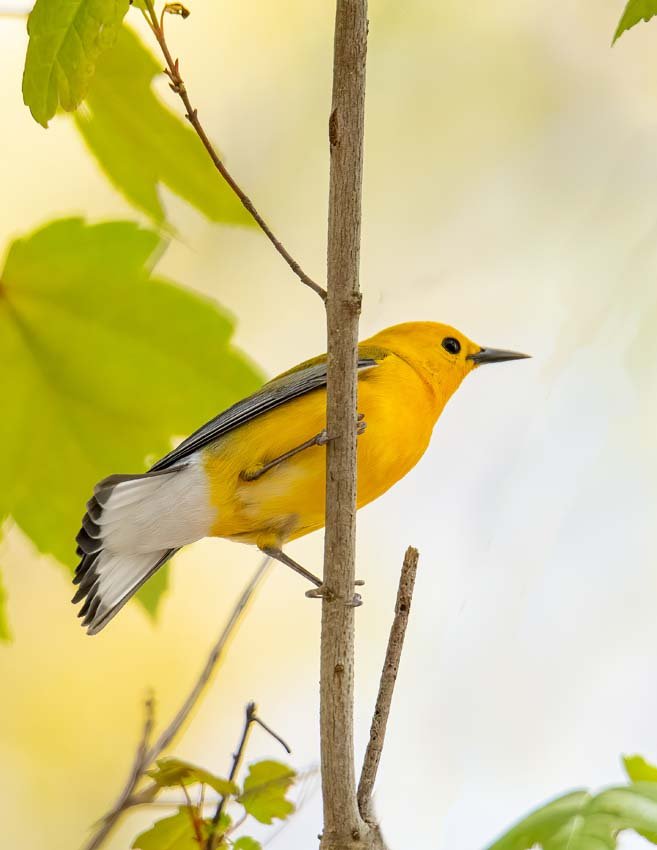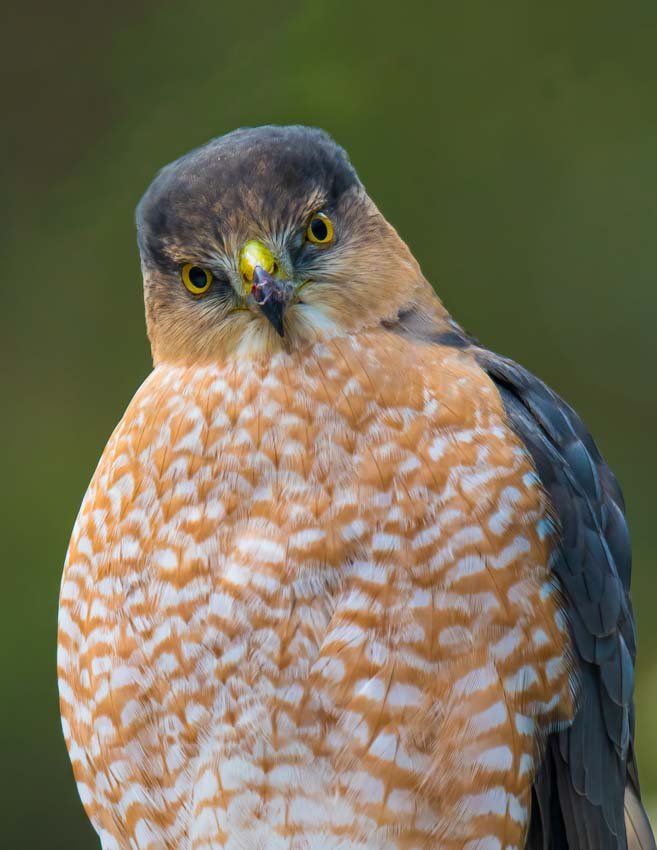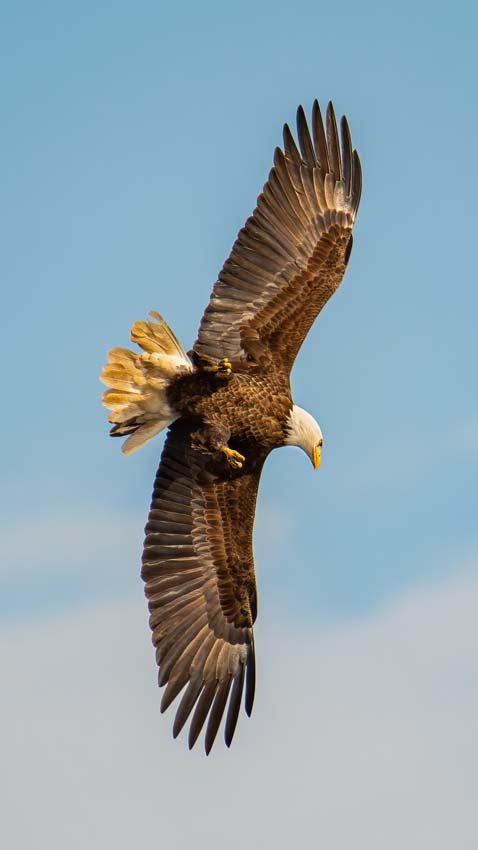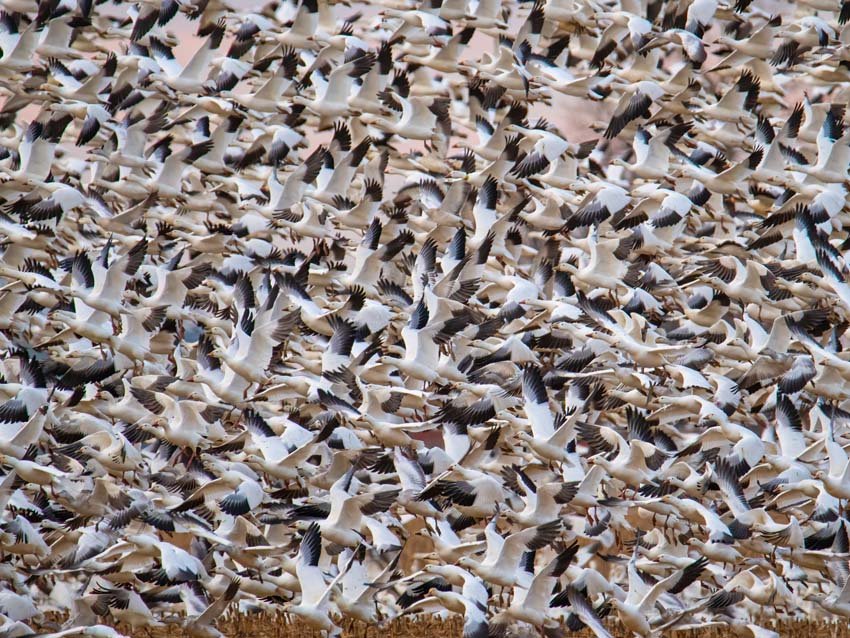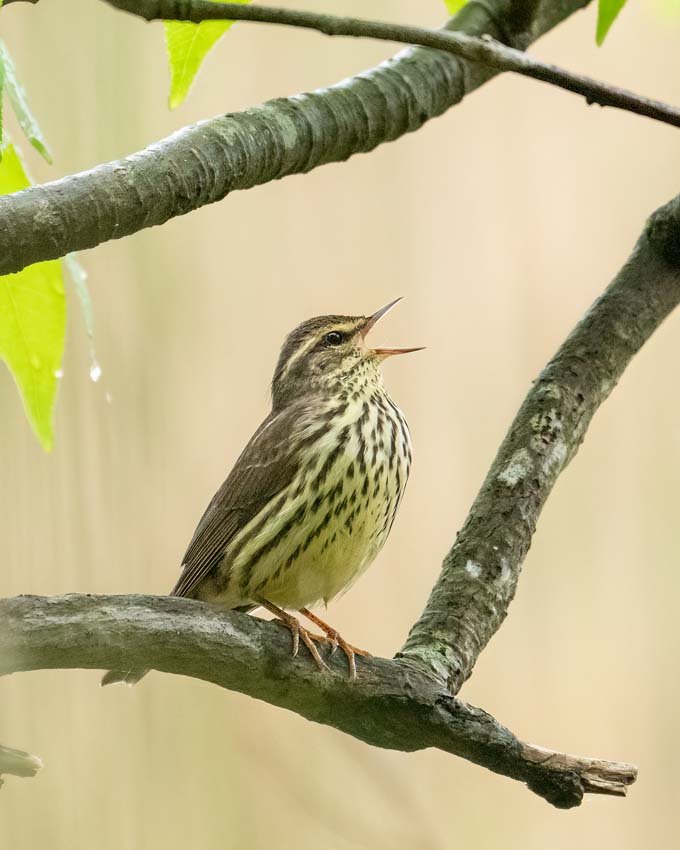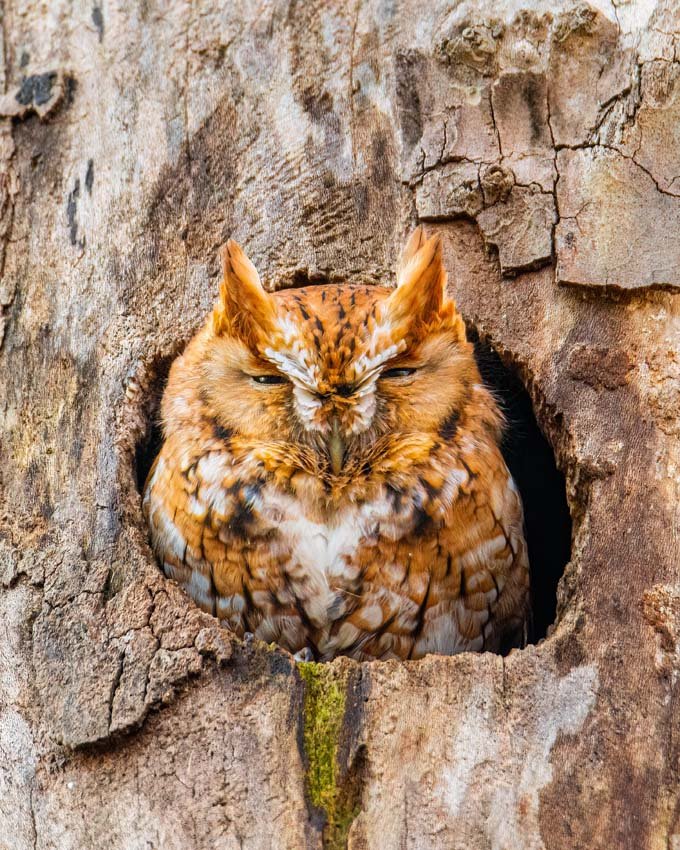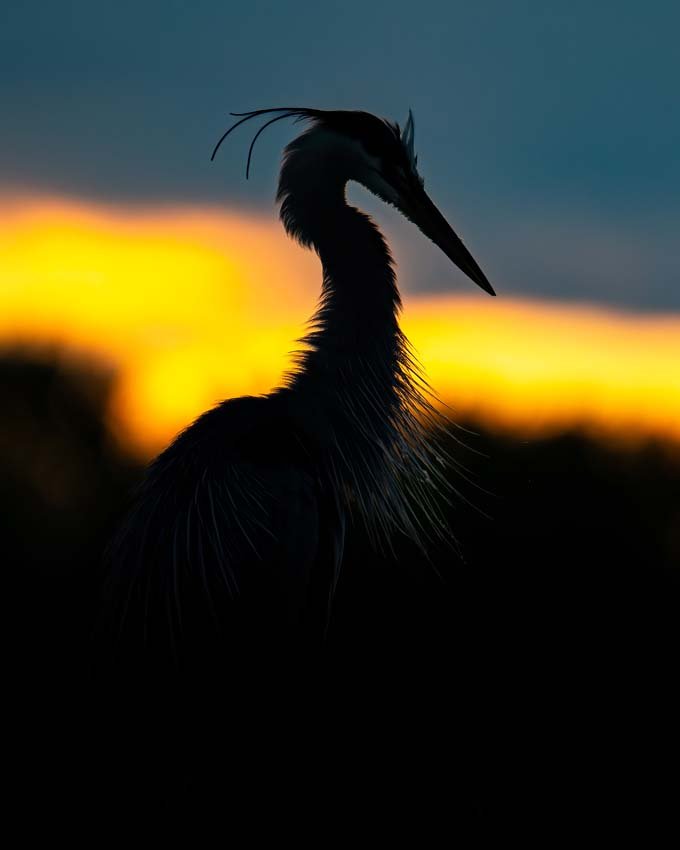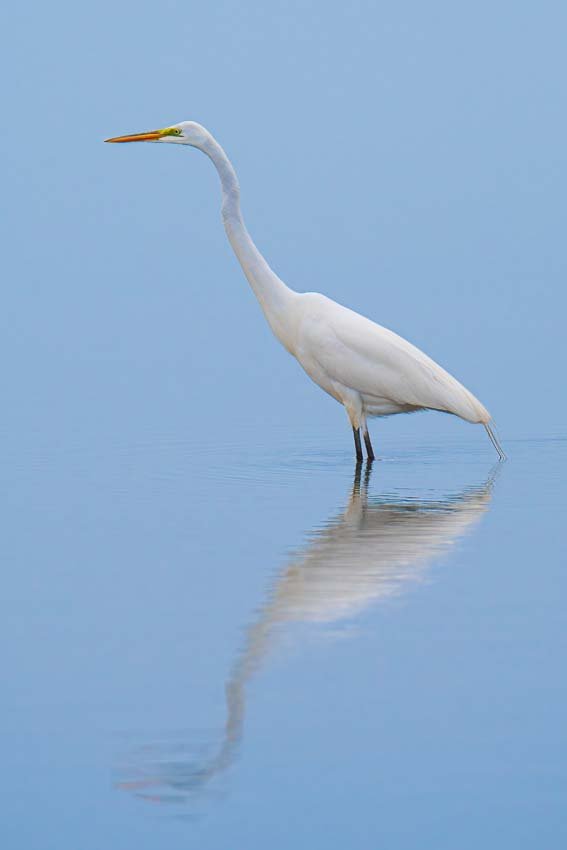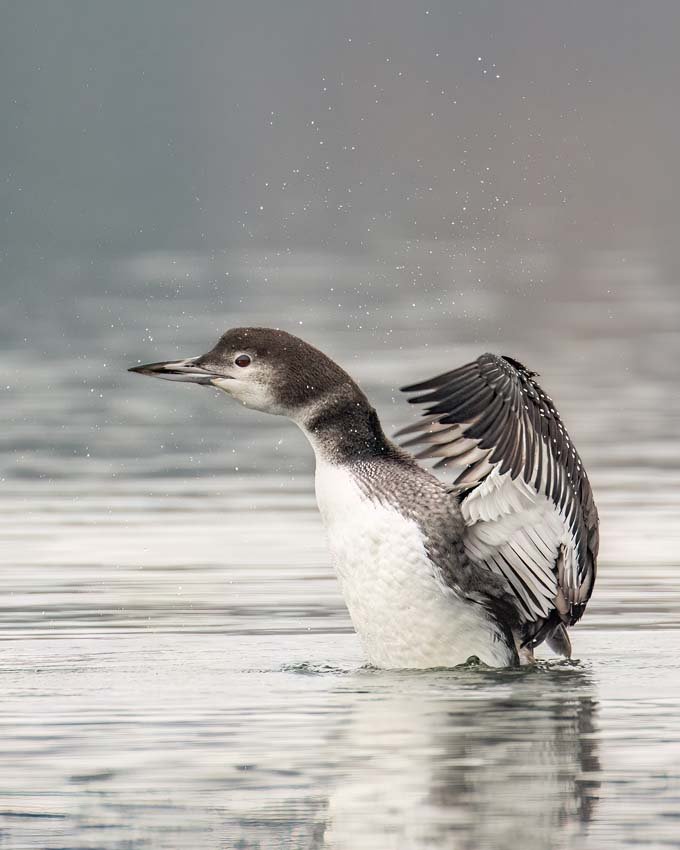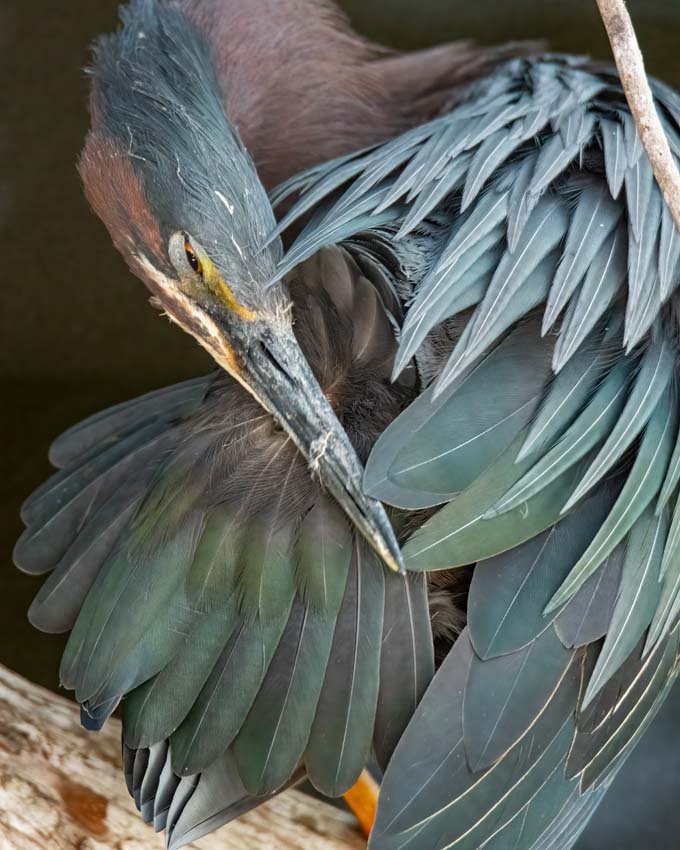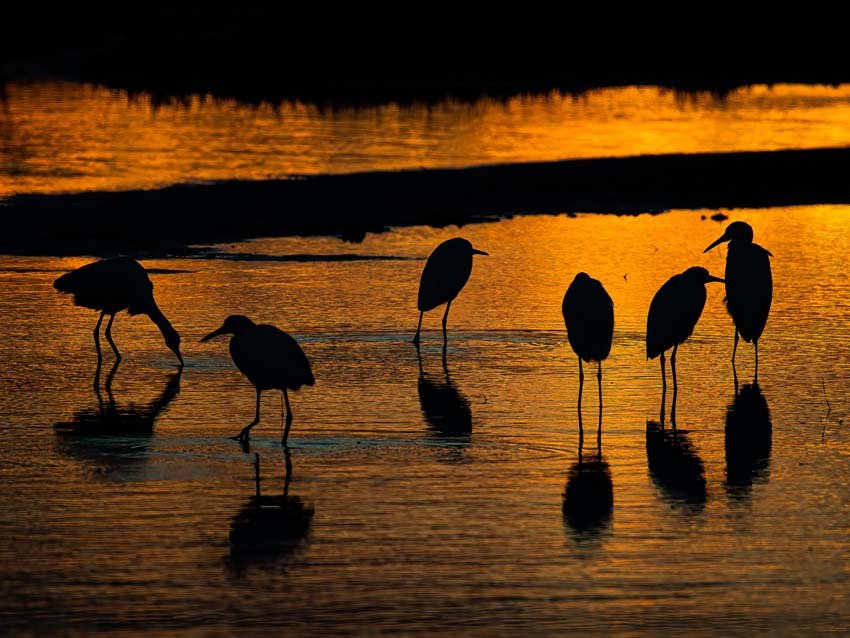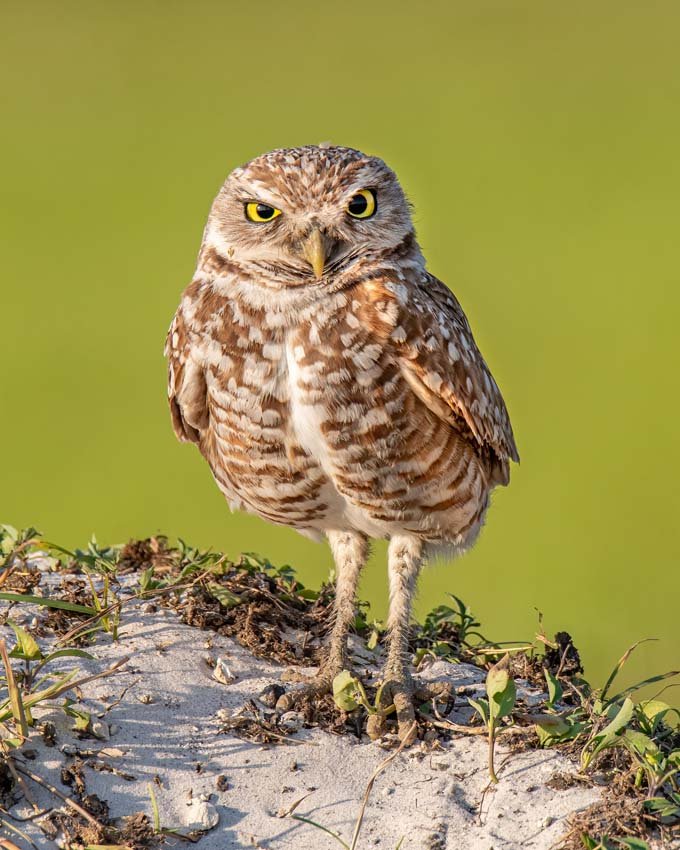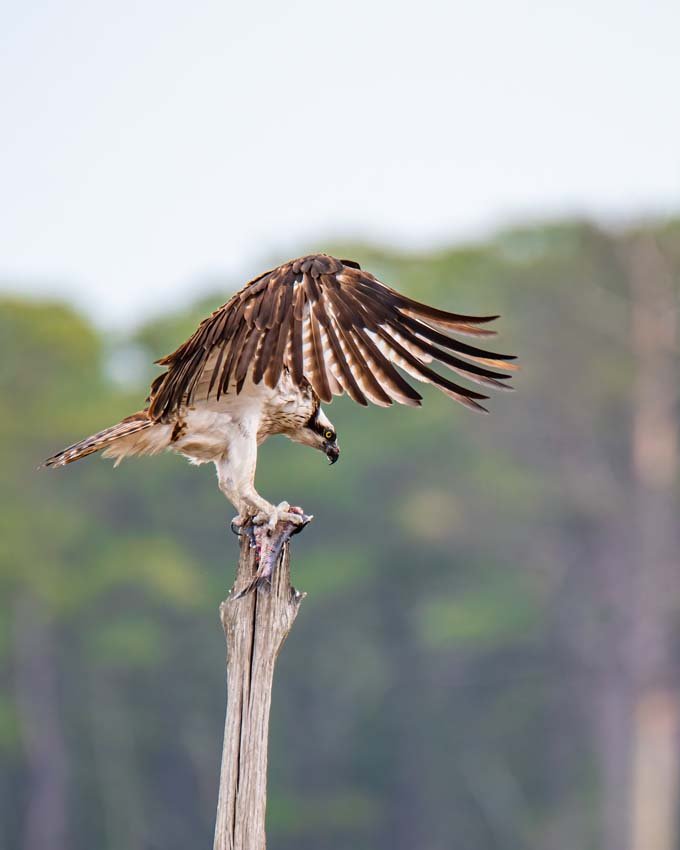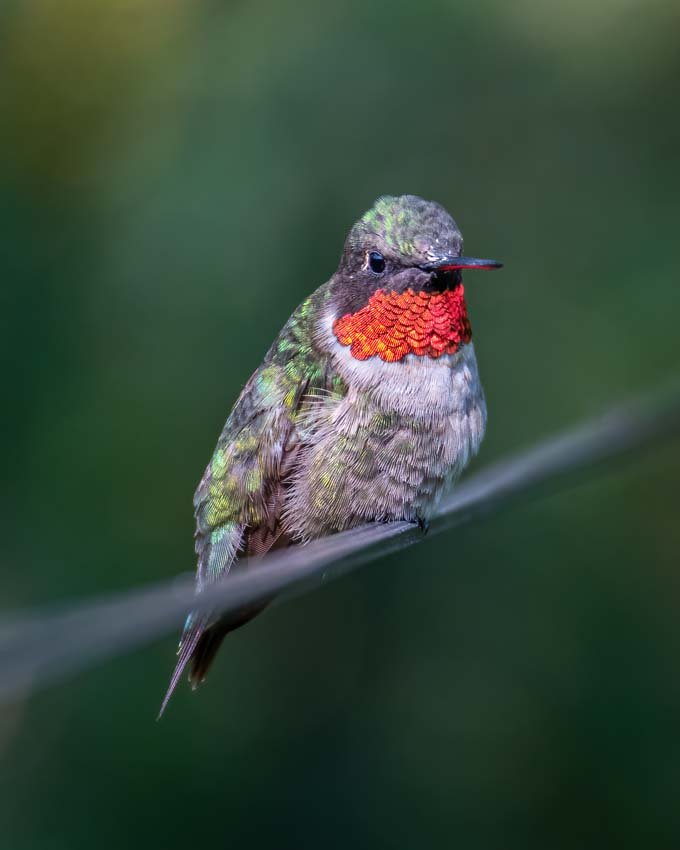+ By Terese Schlachter + Photos by Jack Turner
Birds are cagey. Ever so sweetly, they coo and taunt, provoking the pursuit. Then, with the flirty fluff of a tail feather, they vanish into a vacant sky.
“Birds are churlish and uncooperative,” says Jack Turner. Notwithstanding, he spends countless hours chasing tail. “I can’t tell you how many butt views I have,” he says, slinging his camera over his shoulder. He’s more of a beak man.
Turner says that he is a photographer who got into birding rather than a birder who got into photography. He’s been fixated on the fine and feathered for the better part of a decade, ever since a great blue heron knee-necked its way into his viewfinder. Turner posted that photo on Facebook and watched the “likes” accumulate. Encouraged, he began to branch out. Now, he’s created a brand: Jack Wildlife. He guides “the intrepid” on birding tours. He lectures. But mostly, using a 600-millimeter lens on his Nikon Z 8 camera, he captures delicate, detailed images of his flighty, fugacious subjects. Over the summer, he hosted a solo photography exhibit in the lobby of the Arundel Center on Calvert Street. Images included flocks of gulls spattering a river, the glowing golden eye of an owl, and what looks like a haggard heron who’s been kept up all night by the incessant squawks of its youngsters.
While Turner has a keen eye and a quick finger, the bird-watching part of his endeavors begins with a finely tuned ear. “There’s a pine warbler,” he notes as he arrives at the Wootons Landing Park in Harwood. He’s not looking up. “Hear it?” he asks. It’s impossible for the nonbirder to isolate the pine warbler’s trill from the tweets of other birds, the whoosh of the breeze, and passing traffic. But in seconds, he spots the little yellow-gray bird flitting about in the treetops.
“Oh! There’s an eastern towhee!” he exclaims, reaching for his phone and accessing Merlin, a popular birding app. Created by the Cornell Lab of Ornithology, Merlin is supported by thousands of collaborators who can enter their own bird data, including the location and date of a sighting. It will identify birds by their tweets and imitate the bird’s call, which is a bit of a tease, as the tweet is often an invitation to mate. Merlin is like the traffic app Waze meets the dating app Tinder.
When birds call or sing, “it’s like a prospect,” says Turner. “It’s like they’re yelling, ‘single healthy male of breeding age over here!’” If this is true, then Wootons Landing Park is like a fowl after-hours club scene. Turner says that in urban areas, birds must chirp louder to be heard over the noise pollution. So much for subtlety.
The city’s din is just one human-made factor contributing to the shrinking avian populations. North America’s is down by 2.9 billion adult breeding birds since 1970, according to the Cornell Lab. The US Fish and Wildlife Service indicates that collisions with buildings and glass are the big threats and electrocutions are common. But actually, the domestic house cat is the most murderous; as of 2017, US felines were swiping out an average of 2.4 billion birds annually. Turner made this point on Instagram last fall and was nearly canceled by the kitty cult. “That caused a big stir,” he admits. “I had to moderate a bit.”
Back in the bushes, Turner is getting his “pish” on. “Pish! Pish!” he says, drawing out the “ish” part. “I don’t really know what that means, but I see other birders doing it.” He says he’s not among the elite avian observers. He doesn’t get up early enough in the morning to hang with the hard-core birders. “I’m a follower,” he says.
Keeping a jaunty pace down the wide trail, “Ooooh, ooooh, good birds up ahead,” he trumpets—apparently, one does not have to whisper when hunting birds, nor does one have to step quietly. He sees American goldfinches and a gray catbird. A screech owl calls. There’s a deer and many turtles. Down the trail a bit, Turner steps out onto a wood platform that looks over a wide swath of wetlands. Red-winged blackbirds abound.
Turner has a day job at GreenVest, an environmental restoration company. His fieldwork there feeds his fascination with the ecosystem and how it works as a natural society. “Everything has a job out here—the plants, the soil, the birds,” he says. There’s also the subset of duties carried out by individual avian species: “Vultures provide sanitary services,” says Turner. “Woodpeckers are the ecosystem’s engineers—other creatures live in the holes [they create]. A dead tree with lots of holes—that’s like a condo!”
The unflinching photographer considers himself an avian ambassador, providing the general citizenry access to the world of birding. He hopes that, once people take to learning about birds, the sky’s the limit on how they may further engage with the environment; they may even become guardians. He says that his best photos are those that tell a story, for example, the one he took in Baltimore in which he captured some blue herons making their nest from trash bags, plastic, old ropes, and sticks—a peek into birdlife in the urban environment.
Turner’s work is where science meets the humanities, and he cleverly bridges the gap between disciplines. Memes on his Instagram account and website explain things such as the tension in Jennifer Lopez and Ben Affleck’s marriage: She failed to identify a warbler (gasp!). Another mimics a Taylor Swift album cover (Swifties should reconsider before canceling Turner’s Tortured Birder’s Department spoof). He’s always recruiting; a casual conversation with a stranger might begin with “Hey, see that bird up there? That’s a least bittern . . .” He says that reactions vary, from vague disinterest to the seed of obsession.
Turner’s message is timely. Early this summer, the Washington Post’s list of top 10 nonfiction paperback books included two about birds: Amy Tan’s The Backyard Bird Chronicles (Knopf, 2024) was second, and What an Owl Knows (Penguin, 2024) by Jennifer Ackerman ranked fourth. The cover of the Travel section of that issue was headlined, “Beauty, death and drama: Live bird cams are nature’s soap opera.” Backyard bird feeders equipped with video cameras are growing in popularity—they are accessible on social media platforms, including those located in bird sanctuaries. Turner, of course, has a bird cam in his backyard.
Back on the trail, Turner’s eyes widen. “I think I hear a warbling vireo,” he says, looking around. “Oh, I’d love to see one of those.” Something flicks between the leaves. “There it is,” he says, aiming the lens skyward for about three seconds. It’s hard to imagine that he got a photograph of anything but blurred branches. But he nails it—it looks as if the little bird was waiting for him, posing. The hard to get has been gotten.
